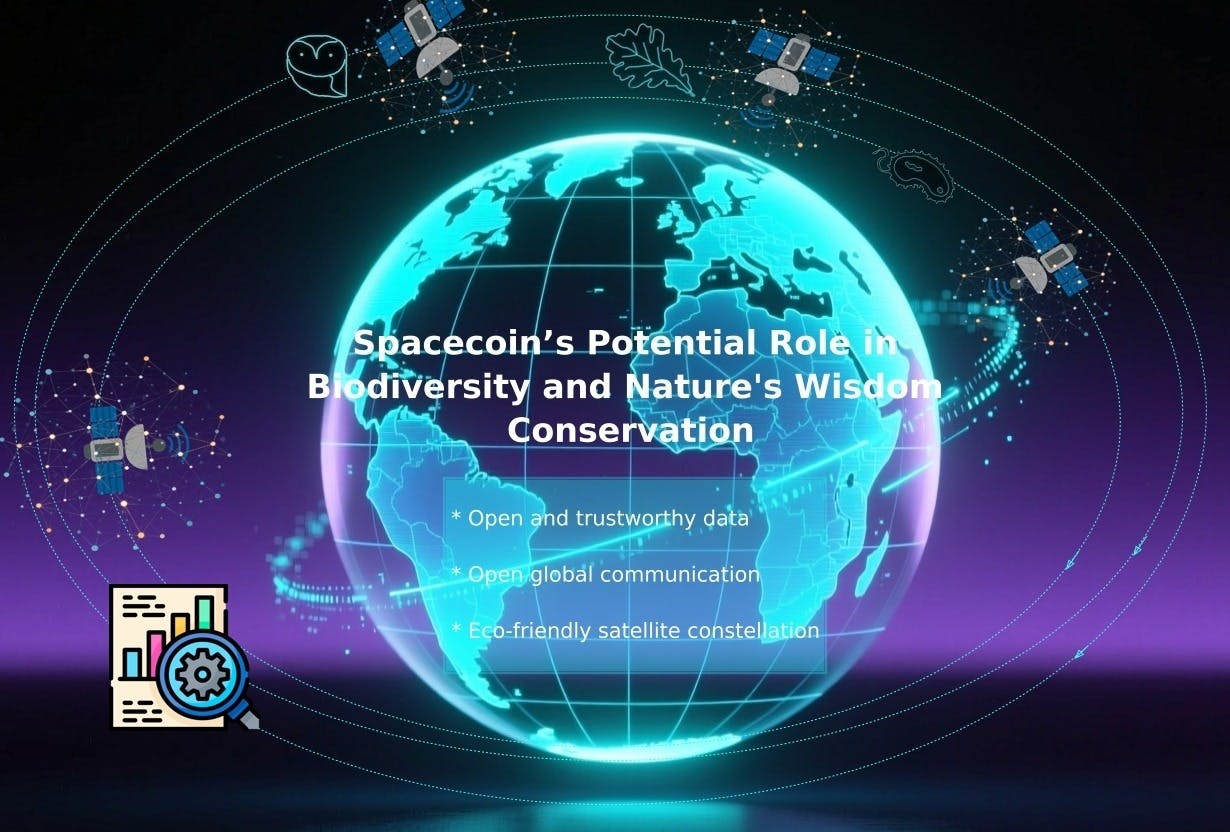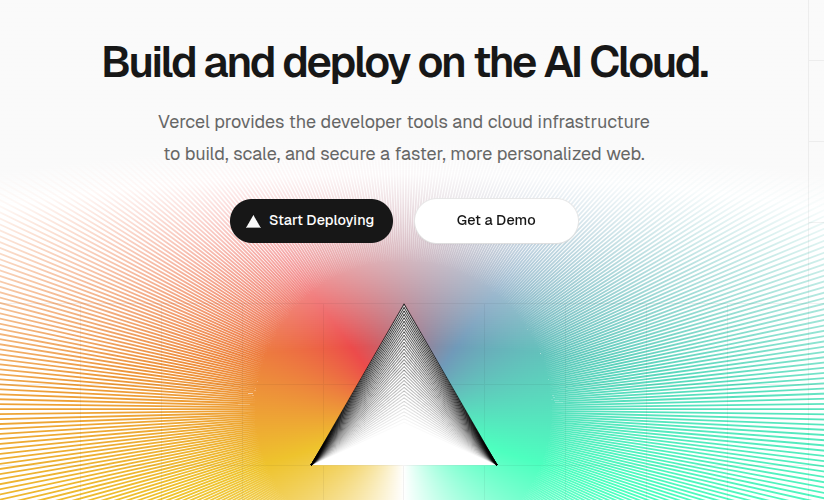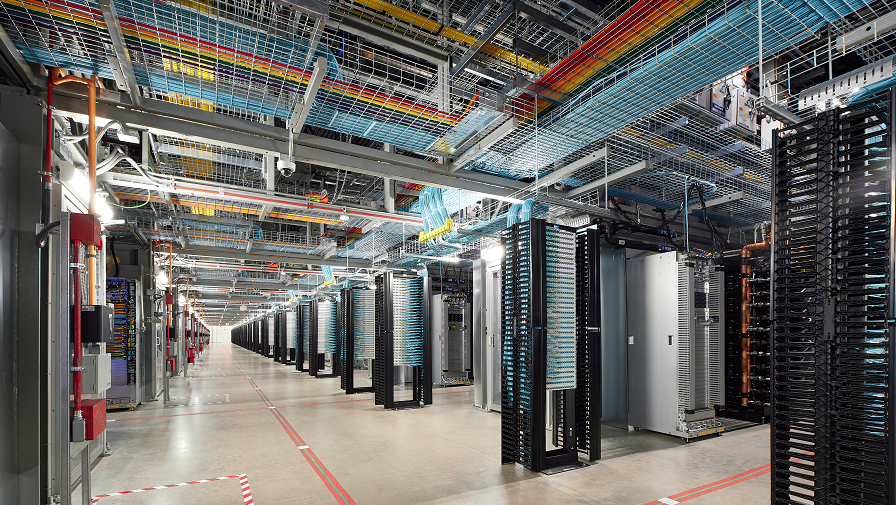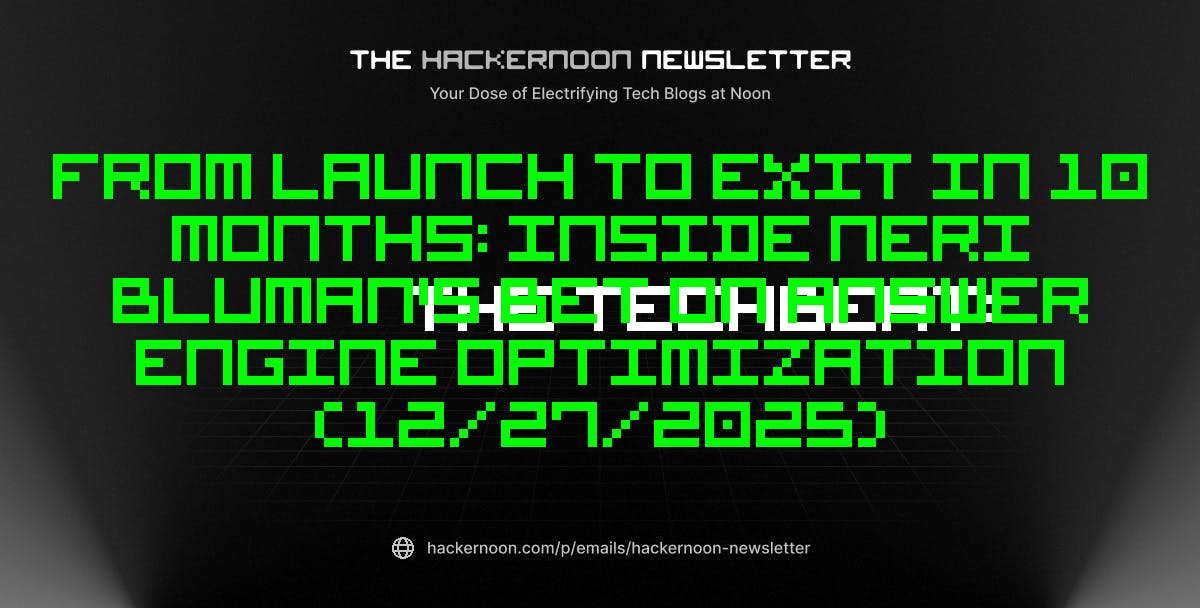Spacecoin could help conserve biodiversity and Nature’s wisdom through transparent Earth observation and by enabling open global communication between devices and people, thanks to its decentralized nature. However, it must address several environmental challenges to ensure that its satellite constellation remains eco-friendly, which could be achieved through nature-inspired design, among other approaches.
Why do we need to preserve biodiversity and Nature’s wisdom
The natural world (animals, plants, fungi, microorganisms, etc.) is not just a biomass that gives us food, raw materials, and medicine. Living beings also regulate ecosystems and represent a precious source of wisdom.
Biomimicry
Living beings have to solve the same challenges as we do. But they had much more time to develop elegant, efficient, and sustainable problem-solving strategies. With biomimicry, we can abstract ideas from the natural world and translate them into the design of everything.
Biomimicry is innovation inspired by nature. And it’s a new way of inventing by looking to the natural world for inspiration. And asking, before we design anything, what would nature do here?
(Janine Benyus)
The idea of an artificial satellite itself was inspired by Nature (think of natural satellites like the Moon). Whether consciously or unconsciously, our reasoning was partially shaped by the surrounding objects, subjects, and events happening around us. We all mimic Nature (usually unknowingly).
Living organisms on Earth have to adapt to various conditions. In the same vein, spacecrafts and astronauts have to adapt to the space environment (solar wind, cosmic dust, space debris, extreme temperatures, and elevated levels of radiation, etc.). Nature-inspired solutions for the space industry include protective materials and systems, space debris removal methods, algorithms for communication and coordination optimization in satellite networks, etc [1].
Here are some examples:
Protective materials and systems
Melanin
Some living beings use different molecules, like melanin, for protection from radiation. Synthetic versions of melanin were created and tested for the same purpose in the space industry [2].
DNA repair mechanism
DNA in living cells can be damaged by different factors, including radiation. That’s why some efficient DNA repair mechanisms could be adapted for the production of radiation-tolerant materials [3].
The Anatomy of the Woodpecker
Some biomechanical adaptations allow woodpeckers to drill holes without getting injured. They could be used in spacecraft and safety gear design and development [4, 5].
Nature-inspired computing
Nature also helped to develop a number of algorithms used in science and engineering [ 7, 10].
Some of them could be applied in the space industry as well. For example, the ‘Ant colony optimization’ algorithm could be used for communication and coordination optimization in satellite networks [8].
Finally, artificial neural networks used in spacecrafts were inspired by the structure of the human brain.
AskNature
If you want to explore different strategies and nature-inspired innovations related to the space sector, you can use web-tools like AskNature. It’s kind of a ‘bridge’ that connects biology and technology. You can find more details on how to apply Biomimicry and use AskNature in this article (Cybersecurity + Biomimicry: Why, What, and How We Could Learn from Nature).
As for the space industry, we can search for corresponding information by entering keywords like “space” in the search field:
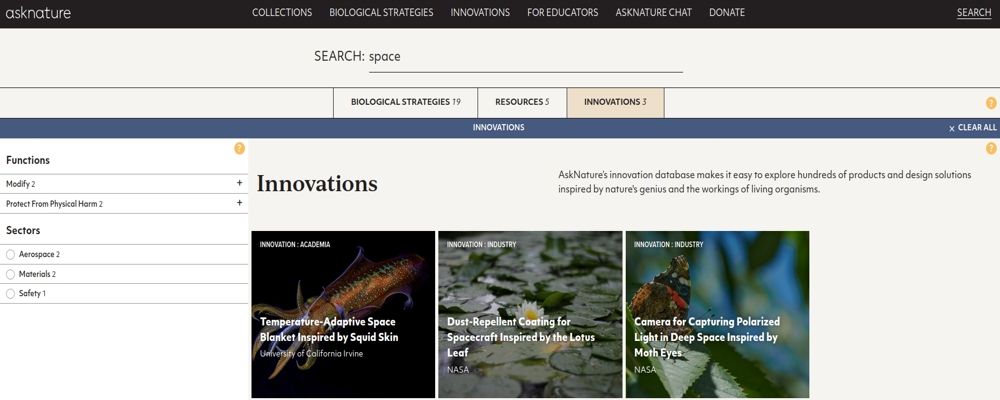
Let’s take a look at the second example (‘Dust-Repellent Coating for Spacecraft Inspired by the Lotus Leaf’).
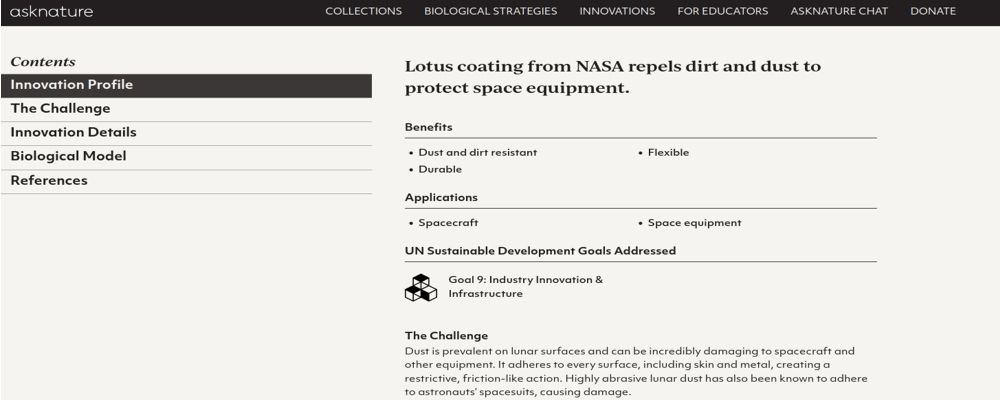
Cosmic dust is a serious issue that affects astronauts as well as spacecraft. Plants like lotuses deal with a similar problem on Earth. They have to stay clean in a muddy environment. The hydrophobic surface of their leaves self-cleans because of its unique microscopic structure. This inspired the development of a protective coating for spaceships and spacesuits [9].
PROTECTION framework
There are some key characteristics that allow living beings to survive and evolve in a changing environment and make their life strategies resilient and adaptive. They are known as the PROTECTION framework (acronym for resPonsiveness, heteROgeneity, decenTralization, rEdundancy, and CooperaTION) [11].
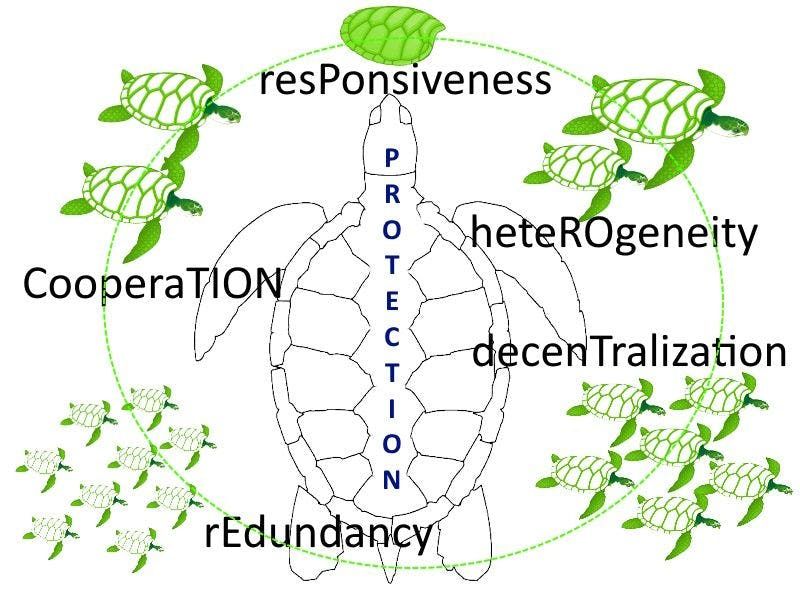
Spacecoin could apply these principles to make sure that its own life strategy and its satellite constellation are resilient and adaptive.
How can Spacecoin help with the conservation of biodiversity and Nature’s wisdom
To preserve biodiversity and Nature’s wisdom, people need to coordinate their efforts. That’s where Spacecoin comes into play by providing satellite-based internet infrastructure.
Decentralized nature of Spacecoin
For the Earth to thrive, technologies created by people have to benefit everyone. This should take priority over profit maximization. Technologies have to be safe for the Earth’s Biosphere. This is hardly achievable in a centralized environment, but is possible in a decentralized one. Spacecoin’s blockchain-powered decentralized satellite network and its ultimate decentralized model of governance might allow the aforementioned to happen if people made environmentally friendly choices.
Open and trustworthy data
Satellite remote sensing, coupled with machine learning techniques, extends our capabilities and allows us to monitor and assess the state of the global environment 24/7 with exceptional speed and precision.
We need this high-quality data to react to threats (like habitat loss and degradation, wildfires, offshore pollution, invasive alien species, diseases, etc.), evaluate the effectiveness of our actions, and improve our decision-making.
The data supplies us information about the atmosphere (temperature, precipitation, wind speed and direction, storms, etc.), oceans (sea surface temperature, ocean winds, etc.), and land (land surface temperature, winds, soil moisture, etc.) [11, 12].
As far as I understand, the problem is that the data is produced and managed by centralized organizations. They can hide some data from the general public or change the data in the interests of big corporations.
That’s where the decentralized nature of Spacecoin is particularly useful. If its community makes environmentally friendly choices in the interests of the Earth’s Biosphere, then the data produced by its satellite network will be open, trustworthy, and used to benefit everyone on the Earth, not just big corporations.
Some real-world use cases of environmental satellite data:
Plant health
The data could allow for early detection of some diseases threatening biodiversity, like oak wilt infection [13, 14].
Marine life
Satellite data could be used to manage marine traffic to protect marine life from fishing gear, ships, and their noise [15].
Agriculture
Satellite crop monitoring could help to find the best conditions to maximize crop yields [15].
Global Forest Watch
It is a web platform for monitoring forests on a global scale. Here you can get up-to-date statistics on forest conditions and near-real-time fire alerts [16].
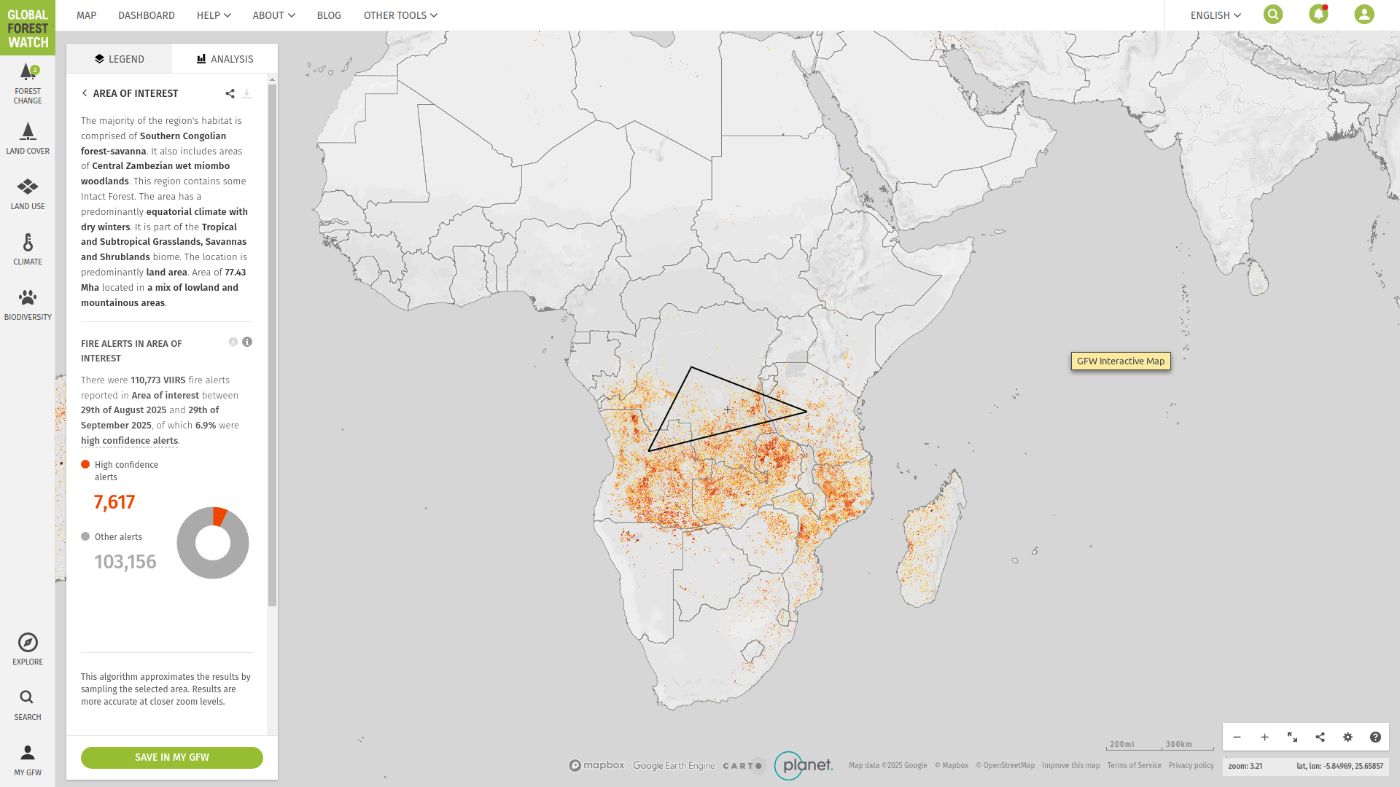
Open global communication
All people are responsible for our habitat. There are lots of communities that deal with biodiversity and environmental issues. And there must be an appropriate infrastructure that supports open and effective communication, and as a result, the coordination of their efforts. Also, there are lots of different projects, tools, and systems that require an open and reliable internet infrastructure.
Centralized internet infrastructure separates people and devices and prevents them from open global collaboration. The decentralized version envisoned by Spacecoin, on the other hand, might have an opposite effect.
To understand what this might look like in practice, we can look at current examples of human–technology collaboration that already point the way forward:
Wave Gliders
Wave Gliders are autonomous devices powered by renewable energy sources for monitoring the state of the oceans globally in real-time. They help people to detect and react to threats like oil spills, illegal fishing, tsunamis etc [17].
InsightFD and Insight Globe
It is a real-time wildfire detection solution. InsightFD robots form a network connected to Insight Globe management platform, which allows for early detection and suppression of wildfires [18].
Rainforest Connection
It is a network of devices that enable people to detect and react to a number of threats like illegal logging and poaching. It can also be used to monitor biodiversity. The main part of the device is a smartphone configured in such a way that it can pick up specific sounds and send appropriate messages [19].
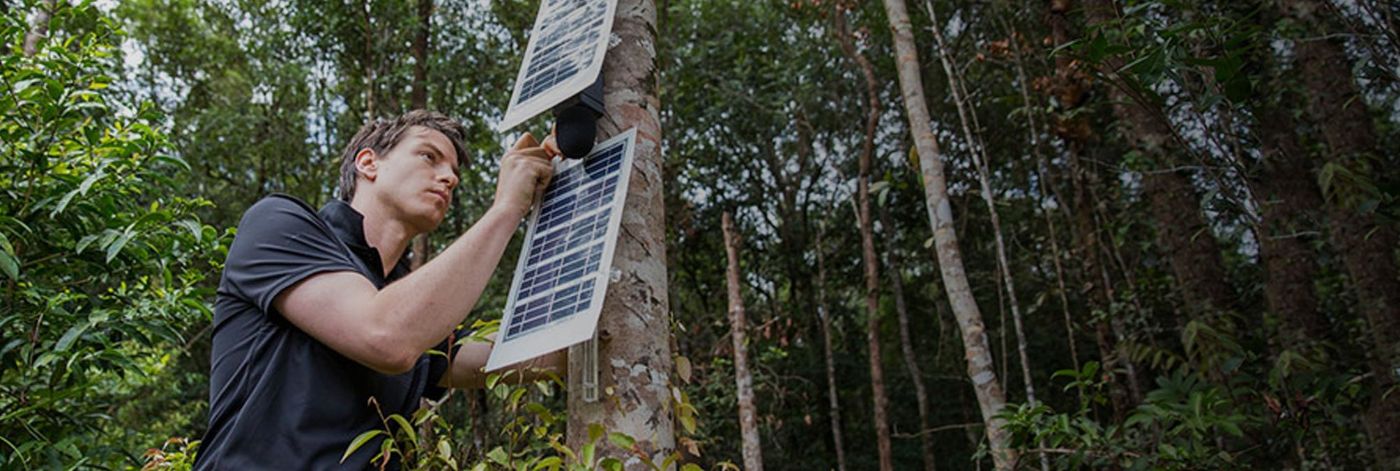
Eco-friendly satellite constellation
Safety first, Cooper
(CASE (“Interstellar” movie, 2014))
To ensure biodiversity, Nature’s wisdom and environmental protection, Spacecoin’s internet infrastructure itself has to be eco-friendly, including its satellite network, launch technologies, signals etc. This is highly unlikely in a competitive centralized environment, but is possible in a collaborative decentralized one.
Each phase of the satellite’s life cycle is associated with some kind of negative environmental impact. For instance, the launching phase is associated with significant pollution of the Earth’s atmosphere. Rocket launches and satellite networks contribute to space debris. During the operational phase, the satellite network may change our natural electromagnetic environment, causing various health problems. Additionally, it contributes to light pollution that may impedethe navigation of birds during migration and our ability to identify different hazardous space objects. Also, satellites may release toxic materials during the final stage of their operational life. All this contributes to habitat destruction and biodiversity loss [20].
Let’s take a look at some examples of solutions that help to make the space industry more nature-friendly. I think it makes sense to use biomimicry philosophy as the foundation of problem-solving. For example, as for debris removal, spacecraft can be equipped with removal systems like drag sails to facilitate their de-orbiting. These systems can be improved by mimicking seed development and dispersal strategies [21]. Other solutions include gecko-inspired adhesive materials and octopi-inspired robotic systems [1, 22]. Another way to solve the problem and increase satellite sustainability is via the usage of modular interchangeable components and biodegradable materials.
Moreover, a lot of additional innovative approaches for the problem were proposed during the BIOINSPACED (bio-inspired solutions for space debris removal) project [1].
Entire space missions could be designed based on bio-inspired solutions and Nature’s unifying patterns [23].
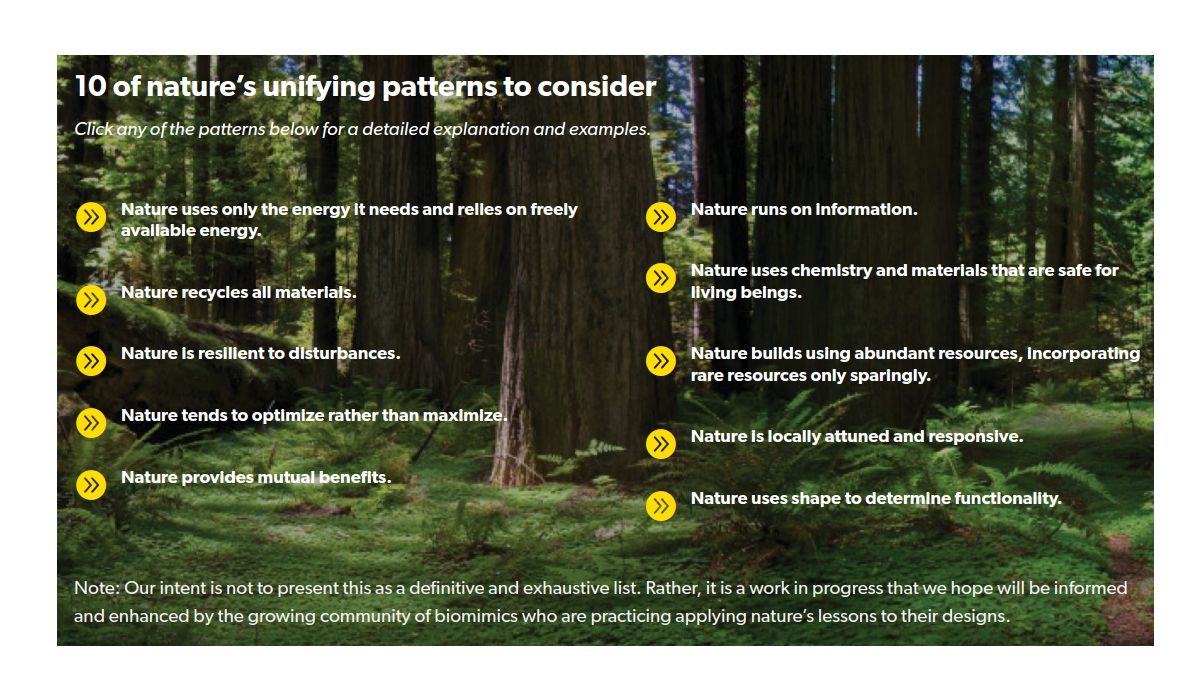
5G
5G is much more powerful than 4G. You can find dozens of scientific articles and papers proving its danger to living beings, and lots of them with the opposite conclusion. It is hard to find the truth. To be honest, 5G does NOT look OK to me. We can take a look at this document on the UK Parliament website [20]:
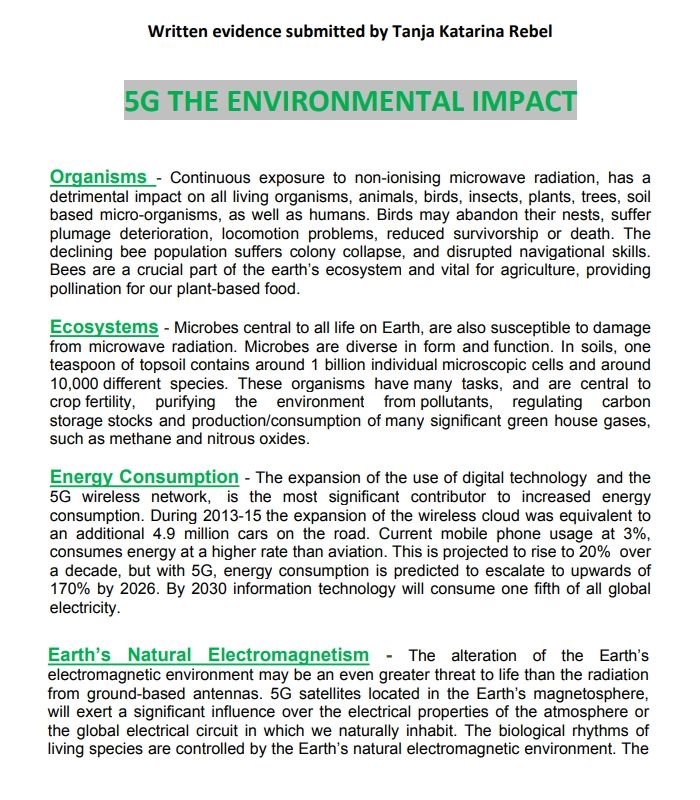
Are there alternatives? I don’t know, I’m not an expert in this field. You can share your thoughts in the comments section. I just hope that people may go back to 3/4G and realize that it is the safety of the signal we should care about the most.
Ignoring Nature while doing business is like shooting yourself in the foot.
If you don’t care about it today, your children may suffer the consequences tomorrow.
:::info
The featured image was composed by me with the help of the digital world glow, research and development (by Freepik), satellite (by Assia Benkerroum), and connected glowing nodes images. Additional images were sourced from Pixabay.
Screenshots sourced from AskNature, Global Forest Watch, BIOMIMICRY TOOLBOX, and Rainforest Connection websites.
:::
References
- Banken E., Oeffner J. (2023). Biomimetics for innovative and future-oriented space applications – A review; Frontiers in Space Technologies 3:1000788; DOI:10.3389/frspt.2022.1000788; LicenseCC BY 4.0
- Vasileiou, T., and Summerer, L. (2020). A biomimetic approach to shielding from ionizing radiation: The case of melanized fungi. PloS one 15, e0229921. doi:10.1371/journal.pone.0229921
- Williams, T. S. (2022). “Advancing research efforts in biomimicry to develop nature-inspired materials, processes for space exploration and more efficient aircraft,” in Biomimicry for aerospace. Editors V. Shyam, M. Eggermont, and A. F. Hepp (Amsterdam, Netherlands: Elsevier), 385–421. doi:10.1016/B978-0-12-821074-1.00014-1
- McKee J. (2022). New Study Shakes Up Long-held Belief on Woodpecker Hammering
- BOYLE R. (2011). Woodpeckers’ Heads Inspire New Shock-Absorbing Systems for Electronics and Humans
- Odili, Julius. (2016). African Buffalo Optimization. International Journal of Software Engineering & Computer Systems. 2. 28-50. 10.15282/ijsecs.2.2016.1.0014.
- Nature-Inspired-Algorithms
- Quan He, Chao Han, Satellite Constellation Design with Adaptively Continuous Ant System Algorithm, Chinese Journal of Aeronautics, Volume 20, Issue 4, 2007, Pages 297-303, ISSN 1000-9361
- Dust-Repellent Coating for Spacecraft Inspired by the Lotus Leaf
- Rzeszutko, Elzbieta & Mazurczyk, Wojciech. (2014). Insights from Nature for Cybersecurity. Health security. 13. 10.1089/hs.2014.0087. https://www.researchgate.net/publication/267627346_Insights_from_Nature_for_Cybersecurity?
- Wu, Z., Zhang, C., Gu, X. et al. Deep learning enables satellite-based monitoring of large populations of terrestrial mammals across heterogeneous landscape. Nat Commun 14, 3072 (2023).
- Medina M. (2010). How Things Work: Environmental Satellites
- Cavender-Bares J. (2025). HOW SATELLITES CAN MEASURE AND PROTECT BIODIVERSITY
- ASCEND (Advancing Spectral biology in Changing ENvironments to understand Diversity)
- Monitoring and protecting our ecosystems from space
- Global Forest Watch
- Wave Gliders
- InsightFD and Insight Globe
- Rainforest Connection
- 5G THE ENVIRONMENTAL IMPACT (Written evidence submitted by Tanja Katarina Rebel); UK parliament web-site https://committees.parliament.uk/writtenevidence/109394/pdf/
- Pandolfi C, Izzo D. Biomimetics on seed dispersal: survey and insights for space exploration. Bioinspir Biomim. 2013 Jun;8(2):025003. doi: 10.1088/1748-3182/8/2/025003. Epub 2013 May 7. PMID: 23648867.
- Jiang, H., Hawkes, E. W., Arutyunov, V., Tims, J., Fuller, C., King, J. P., et al. (2015). “Scaling controllable adhesives to grapple floating objects in space,” in IEEE International Conference on Robotics and Automation (ICRA), 2828–2835. doi:10.1109/ICRA.2015.7139584
- Nature’s Unifying Patterns (Biomimicry Toolbox)

